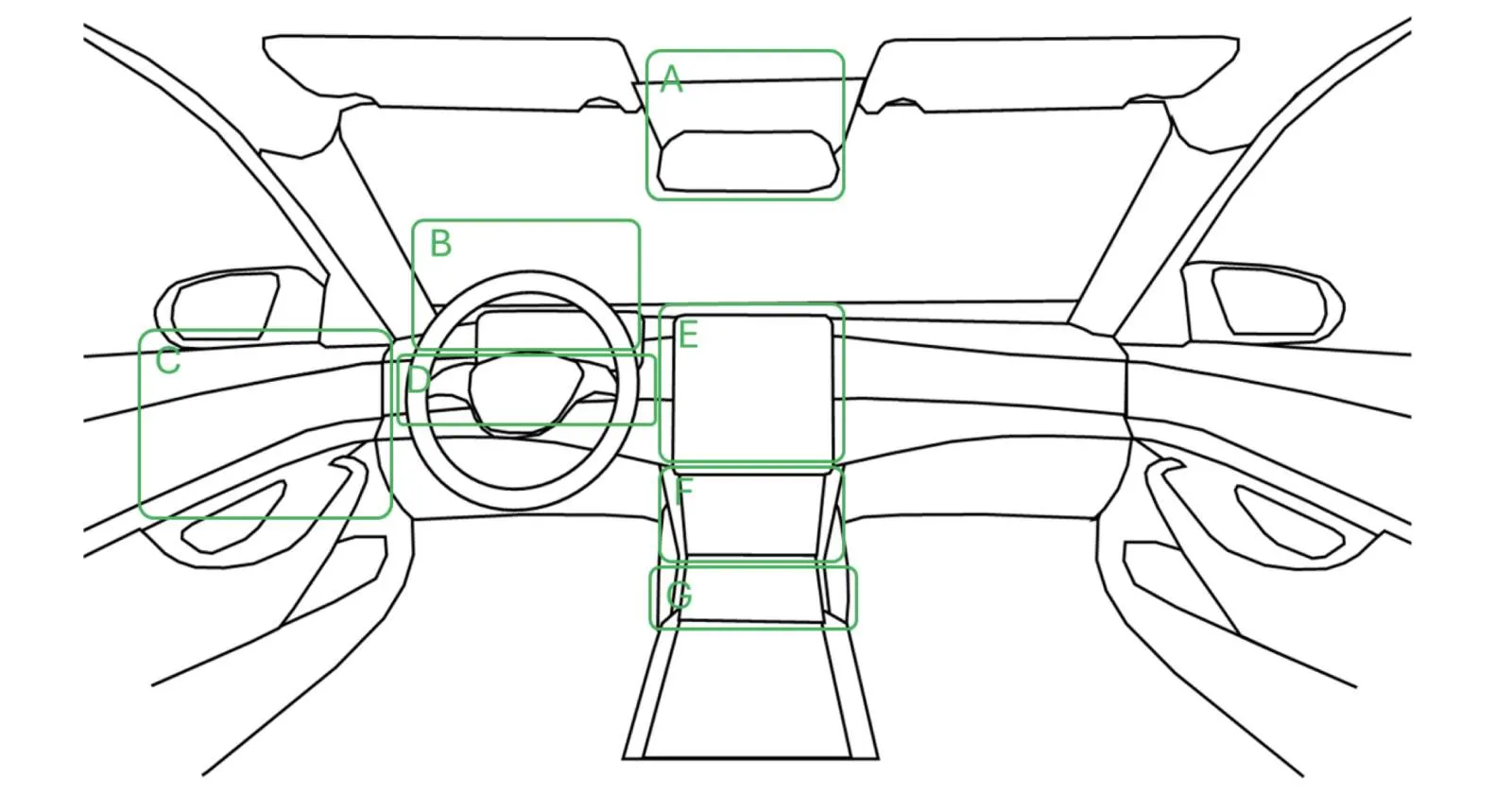
Euro NCAP documentation shows where certain types of controls may and may not be placed in a car to reduce driver distraction.
Share Post

Euro NCAP documentation shows where certain types of controls may and may not be placed in a car to reduce driver distraction.
Euro NCAP, the European New Car Assessment Programme, has issued several updates to its assessment criteria ahead of the implementation of its 2026 protocols in January next year. While many of the new provisions and scoring requirements were announced in March this year, there is now additional clarity on what has changed and how the new rules will apply.
Most noteworthy among the changes are new requirements that prioritise physical controls over touchscreens. The safety agency has noted that touchscreens, especially systems that require multiple taps to navigate through menus, are inferior to tactile systems when it comes to avoiding driver distraction. Touch-based controls often require a driver to take their eyes off the road to visually confirm whether input has been registered.
While it will not be impossible for carmakers who ditch physical controls to achieve 5-star ratings, the move is widely seen as encouraging the reintroduction of traditional buttons, knobs, dials, stalks, and other controls, at least for essential functions. The new criteria identify time-critical controls that must be implemented as physical controls, while others can be relegated to touch-based surfaces, either with a direct, dedicated area or a menu-based system.
Dedicated touch controls must be easily identifiable by touch such as being separated by ridges, and non-related functions must not be clustered together. The touch-sensitive interaction area must be at least 10mm square, with 4mm separation recommended between them. Menu-based controls must not require more than two steps, with very specific exceptions. The locations and orientations of controls have also been specified in the updated protocol.
Physical controls must offer feedback in the form of some feeling of motion, ie a button press or a knob turn, and must operate mechanically. The driver must be able to find the location of such controls by touch alone, minimising off-road eye contact.
There are also criteria for voice commands, which more manufacturers are implementing across car models. All functions that can be voice-controlled must also have an alternative, and there must be a dedicated physical or touch button to activate voice commands. Status indicators for such functions must be within the driver’s direct line of sight.
Controls are now categorised as “Driving” and “Comfort and Infotainment”, with each bucket accounting for 2.5 points under the new safety scoring regime. Driving includes driving controls, vision, lights, and ADAS, while Comfort and Infotainment includes audio entertainment, calling and dialling, navigation, climate control, windows, and “other”.
The agency has specifically called out the horn, direction indicators, gear selector, hazard lights, front wipers, door locks, and SOS controls as essential, meaning direct physical input is required. While some functions such as toggling full beam headlights and wipers are essential, related options such as enabling/disabling automatic mode and adjusting sensitivity can use direct touch or menu-based controls.
The 2026 protocol also defines requirements for driver attention detection, with newer features such as drowsiness detection getting heavier weightage in the final score. Euro NCAP will also encourage actively monitoring a driver’s eye and head movements and body lean, emphasising a need to detect drunk or otherwise impaired drivers. Driver monitoring features must be on by default, and cannot be deactivated with a simple button press. Monitoring must be continuous, and warnings must be issued at specified speed thresholds. Smartphone use and position while driving is also to be detected and accounted for.
Carmakers around the world are likely to face pressure to comply in order to maximise NCAP scores. This could mean adjusting designs and supply chains, likely driving costs up. However, many drivers have complained for years that touch-based controls are inferior, with some manufacturers including Mercedes-Benz even announcing the return of physical controls to some extent prior to these announcements.
Tata Sierra Prices Announced: See What Each Variant Costs
Acko Drive Team 6 Dec, 2025, 7:48 PM IST
Elon Musk Again Promotes Texting While Using Self-Driving Feature Despite Safety, Legal Ramifications
Acko Drive Team 6 Dec, 2025, 12:19 PM IST
KTM Recalls Multiple Bike Models Worldwide for Critical Engine Control Unit Update
Acko Drive Team 6 Dec, 2025, 10:50 AM IST
Govt Clarifies EV Charging Infrastructure Incentives, Ongoing Schemes to Promote EV Manufacturing
Acko Drive Team 6 Dec, 2025, 7:26 AM IST
MotoSoul 2025: TVS Ronin Agonda Edition Launched, Apache RTX 20th Anniversary Edition Unveiled
Acko Drive Team 5 Dec, 2025, 3:14 PM IST
Looking for a new car?
We promise the best car deals and earliest delivery!
